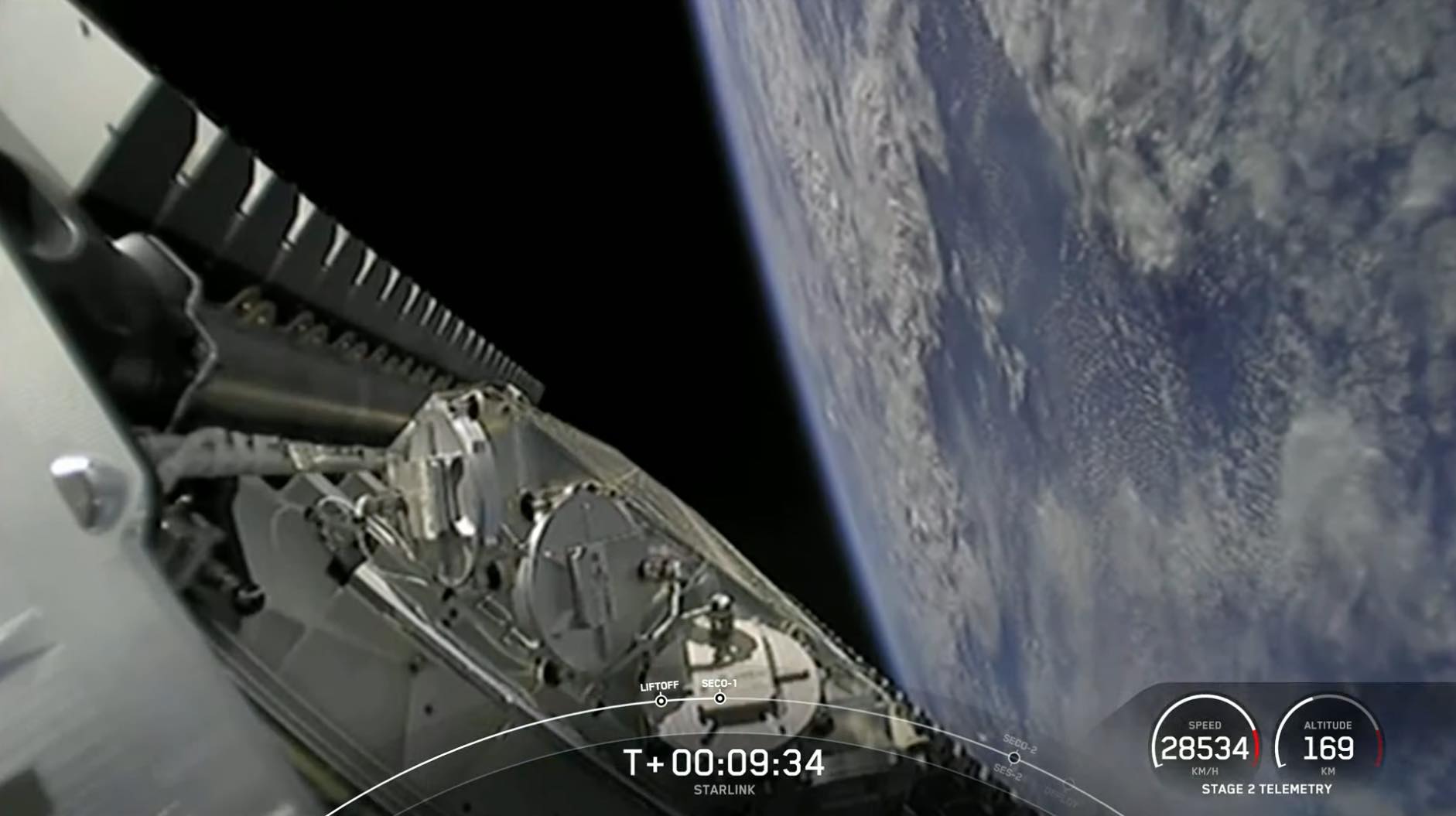
Another 53 Starlink internet satellites are ready to rocket into orbit Friday from Cape Canaveral on a SpaceX Falcon 9 rocket. The two-stage Falcon 9, powered by a reusable booster, will place the 53 internet relay nodes into a low-altitude transfer orbit.
Liftoff is set for 3:21:20 p.m. EDT (1921:20 GMT) from pad 40 at Cape Canaveral Space Force Station. SpaceX rolled the Falcon 9 to the pad from a nearby hangar late Thursday, then raised the 229-foot-tall (70-meter) rocket vertical in preparation for Friday afternoon’s launch opportunity.
After powering up the rocket and completing preliminary checkouts, SpaceX’s launch team will oversee a 35-minute automated countdown sequence to load kerosene and liquid oxygen propellants into the Falcon 9.
After final thermal conditioning and transfer of control of the countdown to the Falcon 9’s on-board computer, the rocket will light its nine Merlin 1D main engines in the final seconds before liftoff. Four hold-down clamps will release to allow the Falcon 9 to climb off the pad.
The Merlin engines will generate 1.7 million pounds of thrust to guide the rocket northeast from Cape Canaveral. The first stage will fire for two-and-a-half minutes before detaching to begin a descent toward SpaceX’s drone ship “A Shortfall of Gravitas” in the Atlantic Ocean about 400 miles (650 kilometers) downrange from the launch site.
Landing of the first stage is expected at T+plus 8 minutes, 49 seconds.
The Falcon 9’s upper stage will burn for about six minutes to place the Starlink satellites into a transfer orbit ranging between 144 miles and 208 miles (232-by-336 kilometers), at an inclination of 53.2 degrees to the equator.

The first stage for Friday’s launch is designated B1062 in SpaceX’s inventory. The booster’s first launch was on Nov. 5, 2020, with a U.S. military GPS navigation satellite. Since then, the rocket has launched two commercial astronaut missions, another GPS satellite, the Egyptian Nilesat 301 communications spacecraft, and three Starlink missions.
The Falcon 9’s reusable payload fairing will jettison during the second stage burn. A recovery ship is also on station in the Atlantic to retrieve the two halves of the nose cone after they splash down under parachutes.
The upper stage is scheduled to deploy the 53 Starlink satellites at T+plus 15 minutes, 15 seconds. The Starlink satellites will separate from the Falcon 9’s upper stage after it releases four retention rods that hold the spacecraft to the rocket during launch.
The satellites will deploy their power-generating solar arrays and use ion engines to climb to an altitude of 335 miles (540 kilometers). The orbit-raising maneuvers typically take a few weeks to a few months, depending on the orbital plane targeted for each spacecraft.
SpaceX has launched 3,055 Starlink satellites going into Friday’s mission, known as Starlink 4-27, including prototypes and earlier spacecraft designs no longer in service. The 53 satellites to be added to the constellation on the Starlink 4-27 mission will push the total number of Starlink spacecraft launch to more than 3,100.
A tabulation by Jonathan McDowell, an astrophysicist and expert tracker of spaceflight activities, shows there are 2,756 Starlink satellites functional in orbit, as of Friday. The network has a 2,312 satellites operational providing consumer broadband services, and the rest are maneuvering into the final orbital positions, according to McDowell.
Email the author.
Follow Stephen Clark on Twitter: @StephenClark1.
